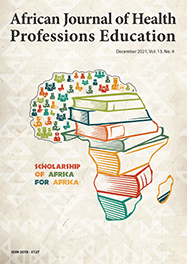Using aspects of Bernstein’s pedagogic device to review and re-align the pharmacy curriculum at Rhodes University
Division of Pharmacy Practice, Faculty of Pharmacy, Rhodes University
C Oltmann, PhD
Context and setting
The South African Pharmacy Council (SAPC) registered a new BPharm qualification with the South African Qualifications Authority (SAQA) in March 2009. All pharmacy schools/faculties in South Africa have to re-align their curricula and implement no later than 2013.
Why the idea was necessary
The process of curriculum review and re-alignment typically involves four phases:
• document analysis
• discussions and negotiations within and across disciplines
• implementation
• monitoring and evaluation of the re-aligned curriculum.
Reviewing a curriculum also provides a space to analyse it critically in relation to the vision, mission, policies and procedures, educational theory, pedagogy and hegemony. Aspects of Bernstein’s pedagogic device are useful to determine the way in which knowledge is classified and framed (referred to as the pedagogic code) and how this pedagogic code is enacted within pedagogic practice. Therefore, we embarked on a critical review of our curriculum while re-aligning it with the new registered qualification.
What was done
The study involved analysis of various documents: the newly registered qualification, SAPC documents, our current and past curricula, reports following previous curriculum reviews, and others. Various stakeholders were consulted. This was followed by discussions within and across the four divisions. Notes were taken during these discussions, transcribed and circulated to members of the group discussions for verification. Once verified, NVivo8 qualitative data software was used to code and categorise the data. An iterative process was followed: as themes and categories emerged they were used for further discussions, until we agreed on issues. Bernstein’s theory of vertical and horizontal discourses and his work on classification and framing provided a theoretical framework. Ethical approval for the study was granted by the Faculty of Pharmacy’s Ethics Committee.
Results and impact
The research revealed strengths and weaknesses within our curriculum – in terms of content, teaching and learning, assessment and evaluation processes. We will build on the strengths and address the weaknesses.
Bernstein’s pedagogic device suggests that our curriculum is mostly a collection code which is strongly classified (C+) and framed (F+) with some integrated code which is weakly classified (C-) and framed (F-). There is debate about shifting towards a more integrated code. The research also suggests that we need to have stronger sequencing between the ‘knowledge code’ and the ‘knower code’.
There are power relations at play with regard to what constitutes legitimate knowledge and practice. There is also some tension within and across disciplines with regard to the extent of control of the curriculum by the disciplines, by certain agents, and by certain practices. Currently, the disciplines, the agents, and the practices within the four disciplines determine what counts as legitimate knowledge.
Using aspects of Bernstein’s pedagogic device to review and re-align the pharmacy curriculum was a useful process. It highlighted the relationships and power relations at play between the different agents and components of the curriculum.
AJHPE 2012;4(2):96. DOI:10.7196/AJHPE.103
Article Views
Full text views: 9939




.jpg)
Comments on this article
*Read our policy for posting comments here